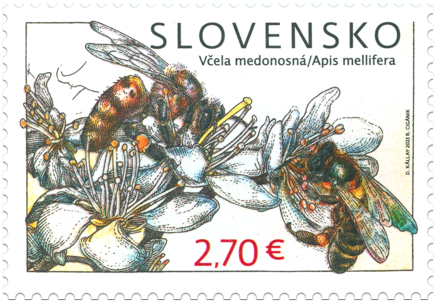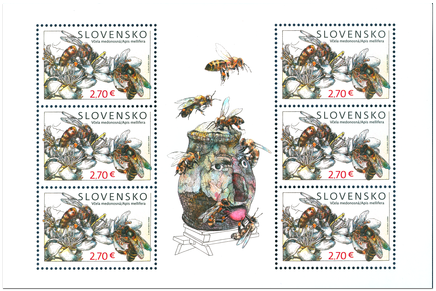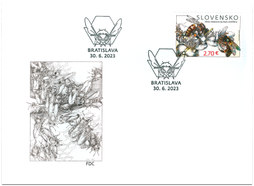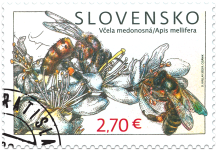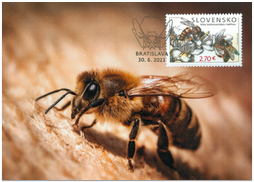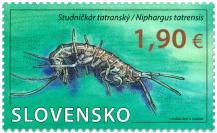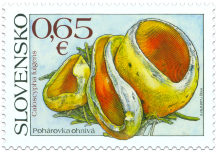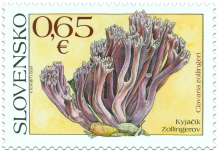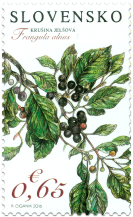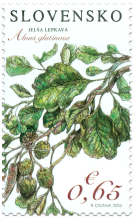796 Date of issue
30.06.2023 Face value
2.70 € Sell price
2.70 €
The honey bee (Apis mellifera) has lived on Earth for more than 80 million years. It is native to Africa and is one of the most useful insects in the world. In general, when we talk about bees or honey bees, we mean the species most commonly found in Europe, the western bee (Apis mellifera), which is kept by beekeepers all over the world. There are several different breeds of honey bee, the economically important ones found in our country are of the genus Carniolan bee (Apis mellifera carnica) that originally come from north-western Slovenia. The individual breeds differ from each other in their appearance, behaviour, hardiness and economic benefits. The honey bee is a hymenopterous insect that forms communities called colonies. The term bee colony describes a community with a single bee mother, also called the queen, worker bees (about 40,000 to 60,000 in the summer) and several hundred to thousands of drones during the breeding season. One community can contain from about 40,000 to 70,000 individuals. The body of a bee is made up of the head, thorax and abdomen and is covered with hair. The queen lives for 2 to 6 years, the workers for 1 to 4 months (only a few weeks in the summer) and the drones for only, approximately, 30 to 60 days. During its short life, a worker bee will work in several different professions, as a nurse, nectar processor, cleaner, comb builder, beehive guard and forager. It is the forager that brings the pollen and nectar to the hive. Bees naturally reproduce by swarming or through human intervention when a new section with a new queen is added. Bees communicate by touching antennae, through the bee dance, through smell, using several types of pheromones, and finally through sound. With the help of their bee dance, bees are able to pass on information about the presence of food and its direction and distance from the hive. They orient themselves using the sun, even when it is hidden behind clouds. One of the many predators that attack bees is the bee mite (Varroa destructor), which is widespread throughout the world, and together with the Asian hornet (Vespa velutina nigrithorax), they are the greatest enemies of bees. Bees produce various valuable natural products such as honey, propolis, wax, royal jelly and bee venom. Worker bees collect the pollen and nectar from flowers, which they later use to produce honey. While searching for and collecting nectar, they unwittingly pollinate flowers and thus contribute to their fertilisation. Honey bees are the world's most widespread natural plant pollinator and are the third most useful agricultural animal.
Jozef Čápek
Show less© 2024 POFIS - Postal philatelic service. All rights reserved

